Hello HIVEs!
Last week I reported on my night-time visit to the Externsteine together with Hans Roufflair, @stepko, Geane, to try out a startracker. Now I had a week to edit the pictures. I used various programs. I would like to present the results to you today.
Letzte Woche berichtete ich von meinen nächtlichen Besuch der Externsteine zusammen mit Hans Roufflair, @stepko, Geane, um einen Startracker auszuprobieren. Jetzt hatte ich eine Woche Zeit, die Bilder zu bearbeiten. Dabei verwendete ich verschiedene Programme. Die Ergebnisse möchte ich dir heute präsentieren.
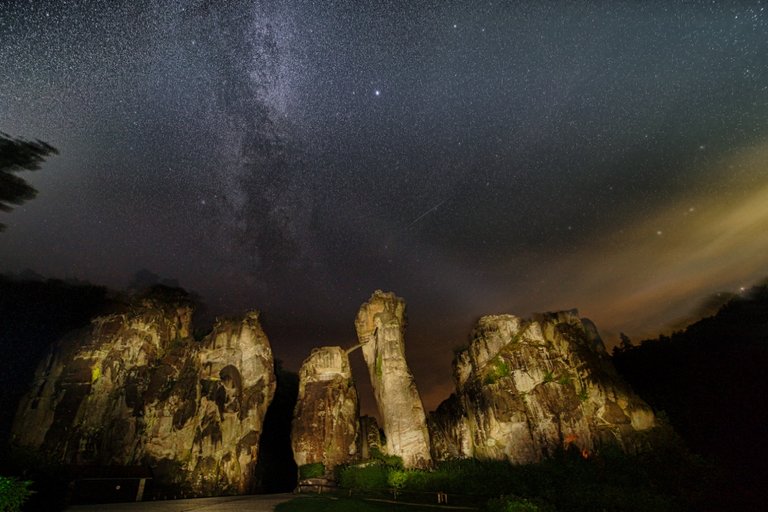
Stacking of two images in LuminarNeo
I had three programs at my disposal: Starry Landscape Tracker (macOS), LuminarNeo (macOS) and Sequator (Windows). The cover image was processed with LuminarNeo. Two images were stacked for this. The image looks quite noisy. This is due to my lack of image editing practice. This was the first time I worked with layers. This simply doesn't happen with light painting. I show the images used for this below.
Drei Programme hatte ich zur Verfügung: Starry Landscape Tracker (macOS), LuminarNeo (macOS) und Sequator(Windows). Das Titelbild wurde mit LuminarNeo bearbeitet. Dafür wurden zwei Bilder gestackt. Das Bild wirkt ziemlich verrauscht. Das liegt an meiner mangelnden Bildbearbeitungs-Praxis. Das war das erste mal, dass ich mit Layern gearbeitet habe. Beim Lightpainten kommt so etwas schlicht nicht vor. Die dafür eingesetzten Bilder zeige ich unten.
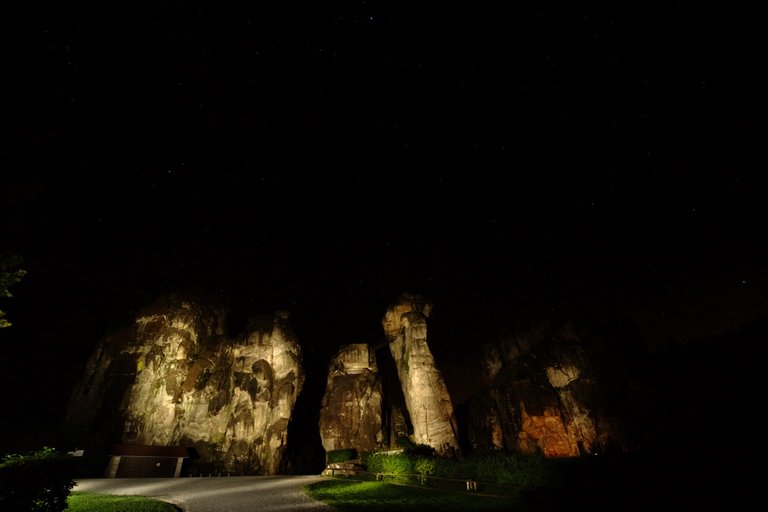
Canon EOS 6D Mark II
Laowa 12 mm F 2.8 zero-d
ISO 800, 12 mm, ƒ5.6, 12s
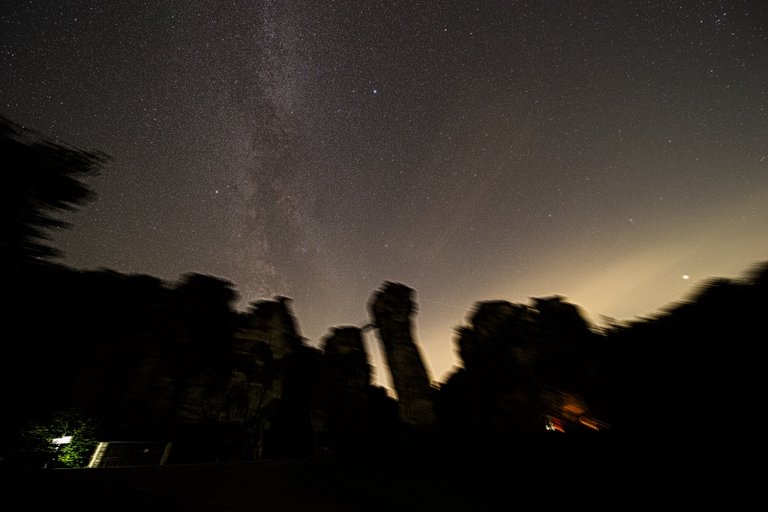
Canon EOS 6D Mark II
Laowa 12 mm F 2.8 zero-d
ISO 800, 12 mm, ƒ5.6, 494s
I exposed the rocks with a NOCTICON DM11. The exposure time was 12 seconds at ISO 800. I captured the night sky with an exposure time of 494 seconds at ISO 800. The camera was tracked by the star tracker during the exposure to compensate for the earth's rotation.
Die Felsen belichtete ich mit einer NOCTICON DM11. Die Belichtungszeit betrug 12 Sekunden bei ISO 800. Den Nachthimmel nahm ich mit einer Belichtungszeit von 494Sekunden bei ISO 800 auf. Die Kamera wurde während der Aufnahme durch den Startracker nachgeführt, um die Erdrotation auszugleichen.
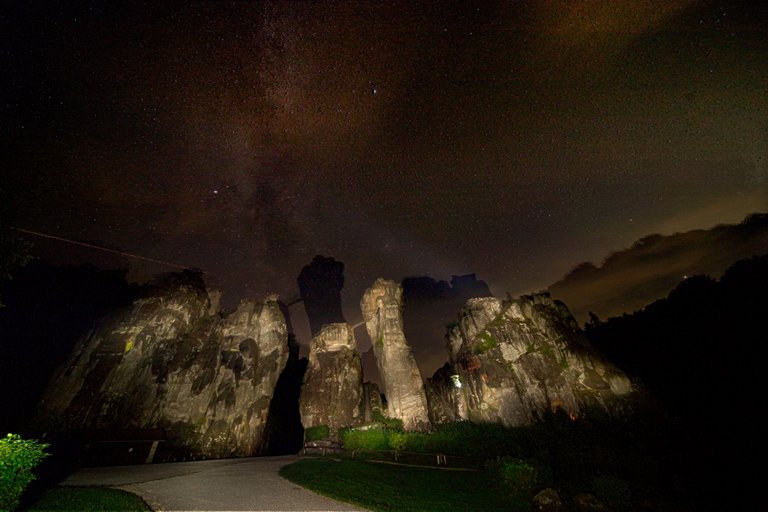
Stacking of three images in Sequator
Sequator
Next, I tried to achieve a better result with the help of Sequator. After starting the program, you first load the Star Images, then the Base Image and, if required, the Noise- and Vignetting Image into the program. Then specify the name of the image to be created. Just a few fine adjustments and you're done. Think again! I must have misunderstood something. Since the tracking of the camera by the star tracker makes the foreground appear blurred, the program was not able to show the foreground in focus. I had the mistaken idea that a sharp foreground image would suffice. I tried the whole thing with 15 images and got an even worse result than shown above.
Als nächstes versuchte ich, mit Hilfe von Sequator ein besseres Ergebnis zu erzielen. Nach dem Start lädt man zuerst die StarImages, dann das BaseImage und bei Bedarf noch das Noise- und das VignettingImage in das Programm. Dann legt man den Namen des zu erstellenden Bildes fest. Nur noch ein paar Feinjustagen und fertig. Denkste! Da hatte ich wohl irgendwas nicht richtig verstanden. Da die Nachführung der Kamera durch den Startracker den Vordergrund unscharf erscheinen läßt, war das Programm nicht in der Lage, den Vordergrund scharf darzustellen. Ich hatte die irrige Vorstellung, dass ein scharfes Vordergrundbild genügt. Das Ganze probierte ich mit 15 Bildern und erhielt ein noch schlechteres Ergebnis als oben abgebildet.
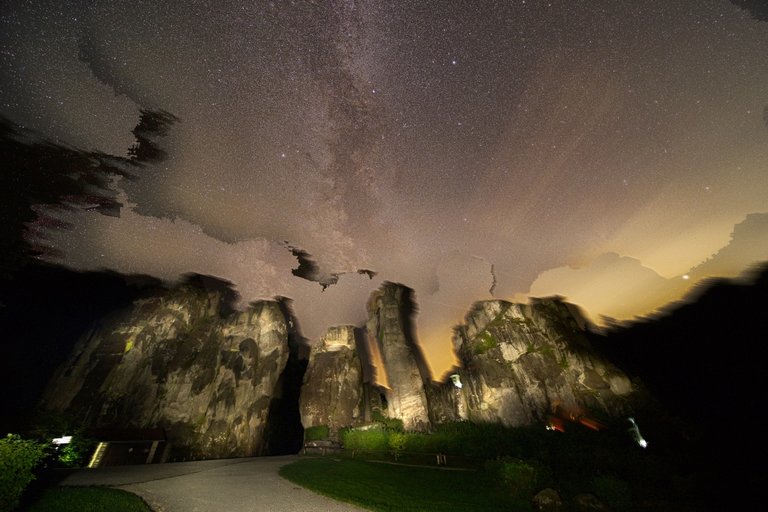
Stacking five images in Starry Landscape Stacker.
StarryLandscapeStacker
So I tested the next program called StarryLandscapeStacker. After starting the program, you are asked to load all the images to be processed. The program then automatically categorizes the loaded images. This can be adjusted manually. The program then automatically masks the sky. This can also be adjusted manually. As can be seen in the image above, this result was also unsatisfactory.
Also testete ich das nächste Programm namens StarryLandscapeStacker. Hier wird man nach dem Start des Programms aufgefordert, alle zu verarbeitenden Bilder zu laden. Danach wird vom Programm eine automatische Kategorisierung der geladenen Bilder vorgenommen. Diese kann manuell angepasst werden. Danach nimmt das Programm eine automatische Maskierung des Himmels vor. Auch diese kann manuell angepasst werden. Wie im Bild oben zu sehen, war auch dieses Ergebnis nicht befriedigend.
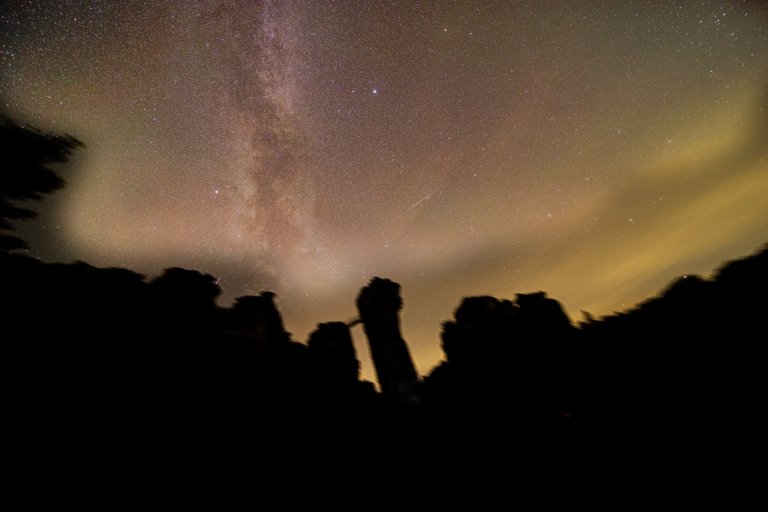
Canon EOS 6D Mark II
Laowa 12 mm F 2.8 zero-d
ISO 800, 12 mm, ƒ5.6, 308s
Summary
In the case described above, the classic method of manually stacking the images was the most effective and delivered the best results. To use the StarryLandscapeStacker or Sequator programs, I had to repeat the experiment with a maximum exposure time per image of 30 seconds. Neither program was suitable for my application. I don't yet know when I'll find the time. When I do, I will report on it here. So stay tuned!
Im oben beschriebenen Fall war die klassische Methode, die Bilder manuell zu stacken die zielführendste und lieferte die besten Ergebnisse. Um die Programme StarryLandscapeStacker oder Sequator zu verwenden, muss ich den Versuch mit einer maximalen Belichtungszeit pro Bild von 30 Sekunden wiederholen. Für meinen Anwendungsfall waren beide Programme nicht geeignet. Ich weiß noch nicht, wann ich Zeit dafür finde. Wenn es soweit ist, werde ich hier darüber berichten. Also bleibt dran!
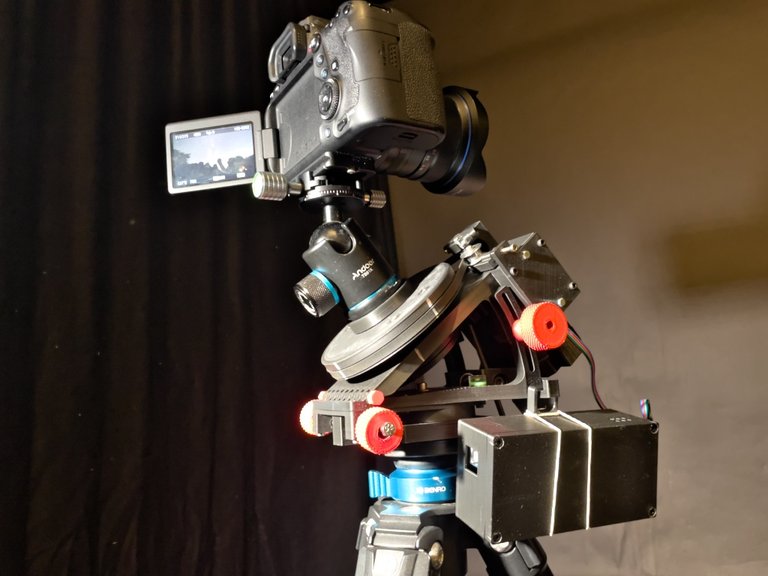
Startracker with camera mounted on the tripod
What Is Light Painting?
Light painting is a unique art form. As a rule, the darkness is illuminated by the artist with various light sources and traces of light are painted into the picture with various lighting tools. Various techniques are used, such as camera rotation or other movements of the camera during exposure. The creative possibilities are almost unlimited. When using ND filters, this technique can also be used in daylight. All images were taken during a single exposure. Apart from denoising, sharpening, cropping and possibly adjusting the white balance, the images are not processed on the computer.
Lichtmalerei ist eine einzigartige Kunstform. In der Regel wird die Dunkelheit mit diversen Lichtquellen vom Künstler ausgeleuchtet und Lichtspuren mit diversen Lichtwerkzeugen ins Bild gemalt. Dabei kommen verschiedene Techniken zum Einsatz, wie Kamerarotation oder andere Bewegungen der Kamera während der Belichtung. Die kreativen Möglichkeiten sind nahezu unbegrenzt. Bei Einsatz von ND-Filtern kann diese Technik auch bei Tageslicht angewand werden. Alle Bilder wurden während einer einzigen Belichtung aufgenommen. Abgesehen vom Entrauschen, Schärfen, Beschneiden und eventuellem Anpassen des Weißabgleichs werden die Bilder nicht am Computer bearbeitet.
CandelART
more about me and my art:

WE ARE LIGHT PAINTERS
To help and support the LightPainters community here on Hive I would appreciate your delegation of HivePower. Any amount is appreciated. It does not require much to get started, we are happy for any gesture. @lightpainters
How to delegate?
Delegate 50HivePower, [50HP]
Delegate 250HivePower, [250HP]
Delegate 500HivePower, [500HP]
Delegate 1000HivePower, [1000HP]
All the Hive Power will help to upvote the artist's contribution as part of the LightPainters community.










No offense but the column format is so hard to read on my phone I simply can't ..and won't. Writing in one language then the other is so much more palatable. Nice thumbnail though.
Thanks for the tip. I use Ecency on my smartphone. There the texts are displayed one below the other. Which software do you use? Perhaps I should adapt my design.
Oh I wonder if Ecency does that no matter what you do? Strange. I use Peakd. Have for years. Sometimes I use Eceny for commenting on the hop but I guess it's what you're used to.
Thank you @jlinaresp ! 😊
Sequator funktioniert nicht mit Nachführung. Dafür ist das Programm auch nicht gedacht. Für solche Bilder ist es besser ohne Nachführung zu arbeiten. Es ist wesentlich einfacher den Vordergrund vernünftig darzustellen, wenn dieser sich nicht bewegt. Die Sterne lassen sich viel einfacher ausrichten.
Du solltest auch mit Nachführung besser nicht mehrere Minuten belichten und lieber mehrere Bilder stacken um das Bildrauschen zu reduzieren. Bei ISO 3200 halte ich maximal 40 bis 45 Sekunden für sinnvoll.
Danke für den Tipp! Vielleicht können wir das ja bald zusammen ausprobieren.
Gerne.
#hive #posh
Sending Love and Ecency Curation Vote!
 Follow Eceny's curation trail to earn better APR on your own HP. : )
Follow Eceny's curation trail to earn better APR on your own HP. : )
Congratulations @candelart! You have completed the following achievement on the Hive blockchain And have been rewarded with New badge(s)
Your next target is to reach 1750 replies.
You can view your badges on your board and compare yourself to others in the Ranking
If you no longer want to receive notifications, reply to this comment with the word
STOPCheck out our last posts: